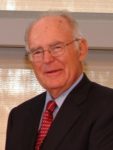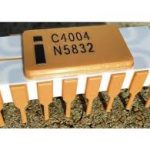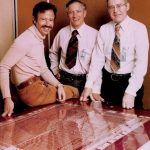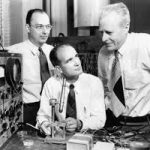– High NA EUV’s coming out party – “Dawn” of the Angstrom Era
– Well attended, positive vibes, not much new but good progress
– Concerns about Samsung slowing spend while Intel accelerates
– KLA reticle inspection quandary – Risky business in China
Tag: gordon moore
Gordon Moore’s legacy will live on through new paths & incarnations
-Gordon Moore’s passing reminds us of how far we have come
-One of many pioneers of chip industry-but most remembered
-The most exponential & ubiquitous industry of all times
-“No exponential is forever”- Gordon Moore was an exponential
Remembering Gordon Moore
He will be remembered most for his observation… Read More
Scaling is Failing with Moore’s Law and Dennard
Looking backward and forward, the white paper from Codasip “Scaling is Failing” by Roddy Urquhart provides an interesting history of processor development since the early 1970s to the present. However it doesn’t stop there and continues to extrapolate what the chip industry has in store for the rest of this decade. For the last… Read More
The Roots Of Silicon Valley
The transistor was successfully demonstrated on December 23, 1947, at Bell Laboratories in Murray Hill, New Jersey, the research arm of American Telephone and Telegraph (AT&T). The three individuals credited with its invention were William (Bill) Shockley Jr., the department head and group leader, John Bardeen… Read More
HFSS – A History of Electromagnetic Simulation Innovation
In the 155 years since James Clerk Maxwell introduced the world to Maxwell’s Equations in the “Dynamic Theory of the Electromagnetic Field” there have been some amazing breakthroughs and avenues of insight. As a young electrical engineering student, we are introduced to the set of equations describing electromagnetic waves,… Read More
Chapter 3 – Moore’s Law is Unconstitutional!
(Adapted from a presentation first given under this title in 1989 and subsequently expanded in presentations over a period of nearly thirty years)
In 1965, Gordon Moore, then R&D Manager for Fairchild Semiconductor, published a paper in “Electronics” magazine predicting the trend for semiconductors in the next ten years. … Read More
Chapter 2 – Constants of the Semiconductor Industry
In the mid 1980’s, Tommy George, then President of Motorola’s Semiconductor Sector, pointed out to me that the semiconductor revenue per unit area had been a constant throughout the history of the industry including the period when germanium transistors made up a large share of semiconductor revenue. I began tracking the numbers… Read More
1971 is the year that Intel changed the world
The “20 Questions with John East” series continues
From time to time I present the History of Silicon Valley as I saw it to various audiences. I always enjoy doing that. I’ve learned that the part that audiences like the most is the Apple / Steve Jobs story. That’s not hard to understand. Steve Jobs was truly fascinating! The story… Read More
Intel let there be RAM
The “20 Questions with John East” series continues
Intel was founded in 1968 by Robert Noyce and Gordon Moore who had left Fairchild earlier that year. They immediately hired Andy Grove. Noyce, Moore and Grove were a study in contrasts. I had various dealings over the years with Noyce and Grove, but have met Moore only twice. They… Read More
The Genius Sperm Bank
The “20 Questions with John East” series continues
How did it happen? How did Fairchild transform over a decade into the “off with their heads” culture? To understand that, you need to know a little about the William Shockley story. William Shockley was born in London in 1910. He moved to Silicon Valley when he was 3. Of course,… Read More









